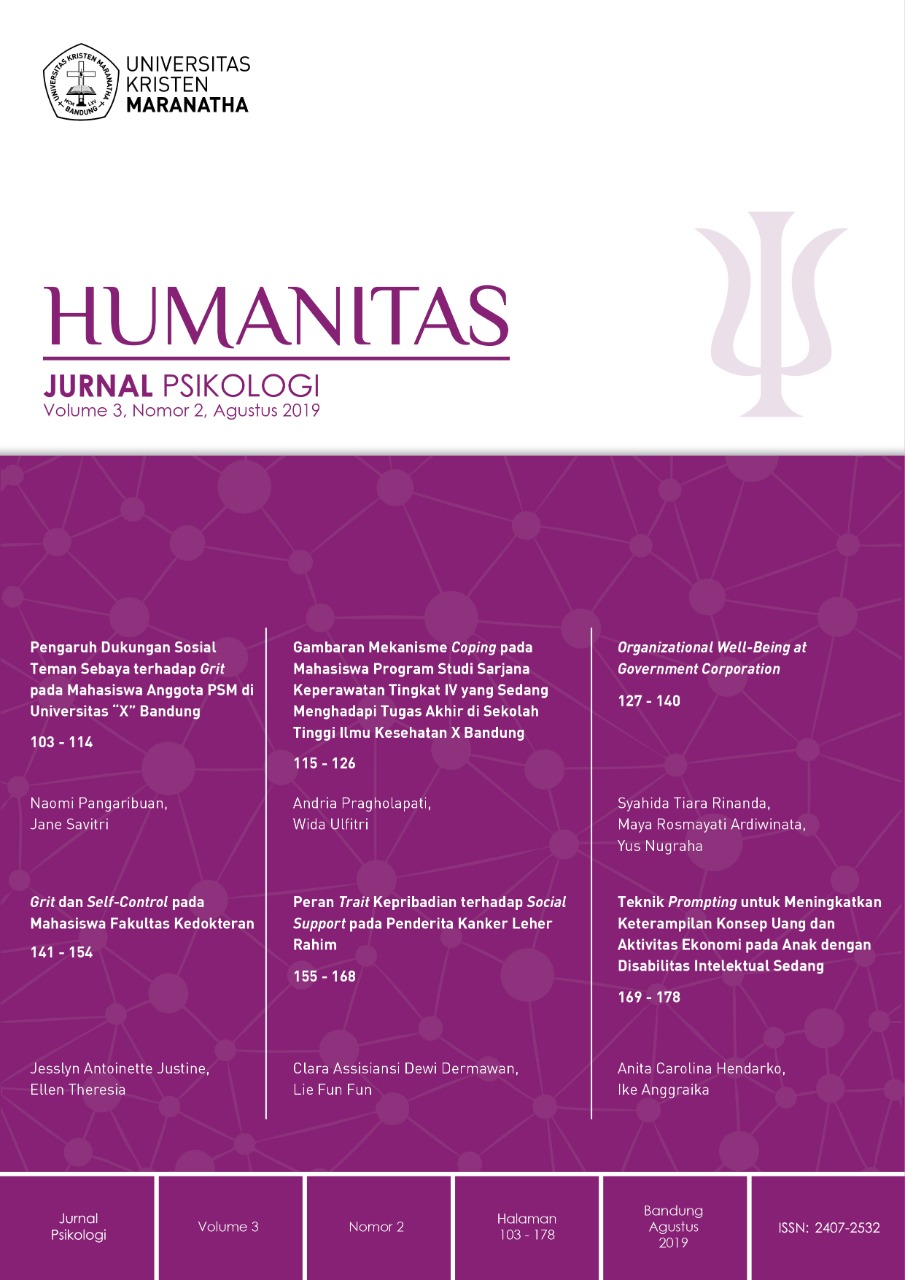Gambaran Mekanisme Coping pada Mahasiswa Program Studi Sarjana Keperawatan Tingkat IV yang Sedang Menghadapi Tugas Akhir di Sekolah Tinggi Ilmu Kesehatan X Bandung
Main Article Content
Abstract
Students are a part of the academic community at tertiary institutions. Students are faced with a variety of stressors, one of them stress facing the final project. The results of interviews with 15 level IV students who were preparing their final project, some students felt stressed with their final project. Symptoms of stress experienced are not feeling well, not eating well, sleeping poorly, headaches, difficulty concentrating. Stress experienced must be treated so as not to have a bad impact, one way to cope with stress is to use the right coping mechanism. The purpose of this study was to determine the description of the coping mechanism in Nurse’s level IV students who are facing a final project at School of Health X Bandung. This research uses quantitative descriptive research methods. The research sample used was 58 students, and sample collection techniques used total sampling techniques. Data collection uses a research instrument in the form of a questionnaire. The results showed students have a coping mechanism in the category of emotion focused coping by 50% and in the category of problem focused coping by 50%. Based on the results of the study, nurses are expected to increase their role as counselors, hold Student Activity Units in the arts,conduct further research to relate stress and more specific coping mechanisms such as listening to music and researching relationships with other factors.
Keywords: Coping Mechanism, College Students
Keywords: Coping Mechanism, College Students
Downloads
Download data is not yet available.
Article Details
How to Cite
Pragholapati, A., & Ulfitri, W. (2019). Gambaran Mekanisme Coping pada Mahasiswa Program Studi Sarjana Keperawatan Tingkat IV yang Sedang Menghadapi Tugas Akhir di Sekolah Tinggi Ilmu Kesehatan X Bandung. Humanitas (Jurnal Psikologi), 3(2), 115–126. https://doi.org/10.28932/humanitas.v3i2.2168
Issue
Section
Articles

